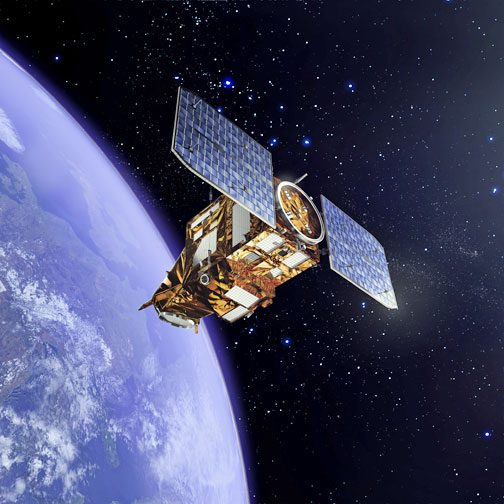
Artistic rendition of Turkey's Göktürk-1 satellite.
Image is courtesy of Thales Alenia Space.
A successful launch has occurred for the Turkish Earth Observation satellite, Göktürk-1.
The launch was carried out by Arianespace from the European spaceport in Kourou in French Guiana at 14:51 CET aboard a VEGA launch vehicle. After the separation of the satellite from the rocket 57 minutes after launch, the early orbit and satellite testing phase was initiated, managed by the Fucino Space Centre of Telespazio, a joint venture between Leonardo (67 percent) and Thales (33 percent).
The first telemetry signal was acquired by the Fucino 68 minutes after launch. The Göktürk-1 program was built by Telespazio as prime contractor, and Thales Alenia Space, a joint venture between Thales and Leonardo-Finmeccanica for the Undersecretariat for the Turkey Defence Industry (SSM, Savunma Sanayii MüsteÅŸarlığı), together with local industrial partners including Tai AS, Aselsan AS, Tubitak Bilgem, Roketsan AS and TR Tecnoloji. The system will be operated by the Turkish Air Force.
Telespazio created the ground segment, including the capabilities of mission control, on orbit satellite management, and the acquisition and data processing systems. The company is also responsible for the launch, entry into orbit and test services. Thales Alenia Space created the observation satellite equipped with a high-resolution optical sensor and created an integration and satellite testing centre at Ankara, inaugurated in 2015, as an infrastructure that can integrate various satellites simultaneously.
The European VEGA launcher, designed, developed and built in Italy by AVIO through its subsidiary ELV (30 percent held by the ISA), was selected for the launch of Göktürk-1. The Göktürk-1 satellite has a mass of approximately 1,000 kg and a service life expectation of seven years. The satellite's observation payload includes a high-resolution optical instrument and an on-board digital imaging storage system to handle data compression, archiving and downloading. The satellite will be positioned in a Sun-Synchronous Orbit (SSO) at an altitude of approximately 700 km.

